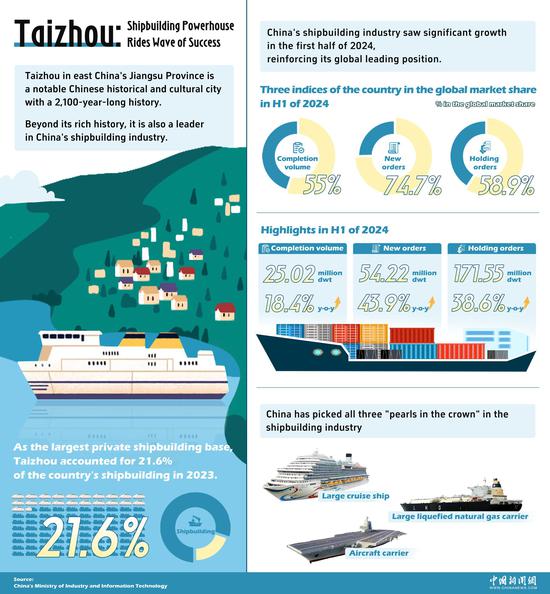
Workers install photovoltaic panels at a power farm in Jiuquan, Gansu province, in May. (CAO HONGZU/FOR CHINA DAILY)
China's photovoltaic industry may see robust growth in installed capacity this year with new installations ranging between 190 and 220 gigawatts, driven by the increasing electrification of energy use and the shift toward low-carbon power consumption, said the China Photovoltaic Industry Association.
Wang Bohua, honorary chairman of the CPIA, said: "In recent years, total electricity consumption in China has steadily risen, propelled by industries such as new energy vehicles, big data centers and 5G base stations. Last year, electricity accounted for 28.1 percent of China's energy consumption. The level may rise to around 35 percent by 2030. Concurrently, the share of green electricity continues to rise, with new energy expected to become the primary source of power generation by 2060."
Wang added: "Recent government initiatives have also relaxed restrictions on grid integration of power generated from new energy sources from 95 percent to 90 percent, potentially unlocking significant installation capacity. The second and third phases of large-scale PV projects in desert regions, including the Gobi Desert in Northwest China, have set clear targets, and are poised for substantial progress by 2024, further driving PV installation growth. Moreover, rapid advancements in grid construction have been evident, with investments in grid projects reaching 170.3 billion yuan ($23.6 billion) from January to May, marking a 21.6 percent year-on-year increase, significantly outpacing the growth rate of power generation projects at 6.5 percent."
He said: "Meanwhile, accelerated development of transmission channels for new energy mega-bases will mitigate integration challenges, crucially supporting installation capacity. The government has also introduced multiple measures to foster distributed new energy development, aiming for a grid-connected capacity of around 500 million kW by 2025."
By the end of June, China's total installed capacity for power generation reached 3.07 billion kW, a 14.1 percent year-on-year increase, said the National Energy Administration. Coal-fired power accounted for 1.17 billion kW, representing 38.1 percent of total installed capacity. Grid-connected wind power capacity stood at 470 million kW, and grid-connected solar power capacity at 710 million kW, totaling 1.18 billion kW, surpassing coal-fired power for the first time in terms of installed capacity.
Wang highlighted that in the first half, domestic PV additions totaled 102.48 GW, up 30.7 percent year-on-year, indicating sustained growth, albeit at a slower pace. Manufacturing scale to support solar installations also expanded, with polysilicon, silicon wafers and module production all increasing over 32 percent year-on-year in the first half.
However, challenges remain, he said, including cost pressures, as polysilicon and other component prices fell below profitability thresholds, contributing to ongoing declines in module bidding prices. Many key enterprises in the industry chain reported net losses in their interim reports. Production capacity growth has slowed, and project cancellations or delays have become more frequent. Additionally, heightened trade protectionism among major economies has impeded export opportunities for Chinese PV firms.
In response, Wang proposed swift industry adjustments, advocating for the phasing-out of obsolete production capacity, promoting corporate mergers and restructuring, facilitating international cooperation, improving standard systems, empowering testing and certification institutions, and driving technological innovation.
"We are confident in China's PV industry's resilience and adaptability to overcome such challenges during cyclical industrial adjustments," he said.
"The consensus reached at the 2023 COP28 United Nations Climate Change Conference in Dubai called for tripling global renewable energy capacity by 2030. Driven by the goal, we remain optimistic about the industry's overall development, projecting global additions of PV installations of 390-430 GW in 2024, sustaining high levels. Installations will focus primarily on markets like China, the United States, Europe and India, with rapid expansion anticipated in emerging markets such as Latin America and the Middle East," Wang said.
"We believe there is substantial potential for further PV penetration. European economies have achieved PV penetration rates exceeding 10 percent in recent years. China's PV penetration rate was 6.18 percent in 2023, above the global average of 5.49 percent. Technologically, both China and global grids possess the capacity to accommodate more solar power," he said.

















































 京公网安备 11010202009201号
京公网安备 11010202009201号